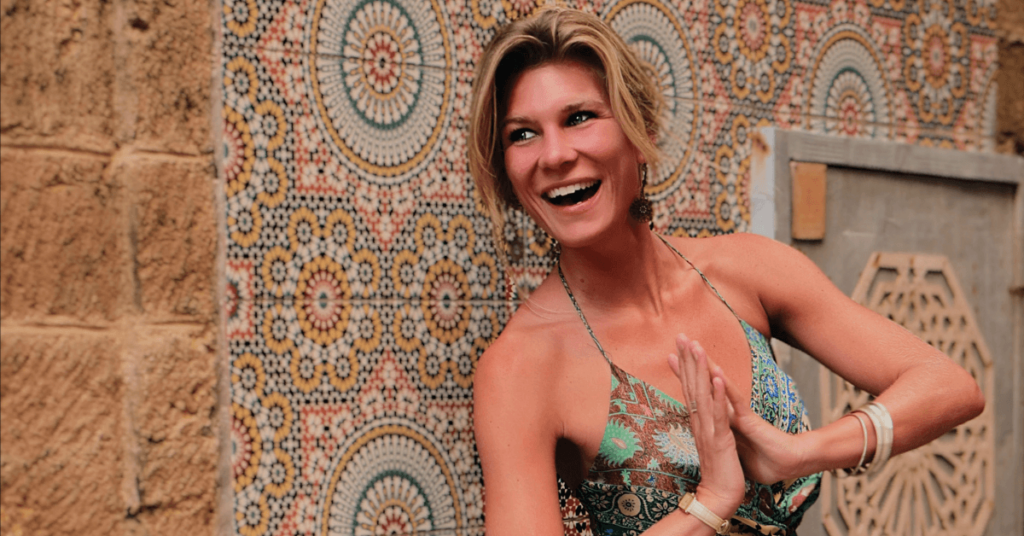Indulgence and the feeling of guilt are very good friends. Most of us have experienced this at least once. No matter your age, gender, origin, the feeling of guilt after a moment of indulging is human.
Indulgence is finding pleasure in something you desire or consume and taking more of it than is necessarily good for you. In principle there’s nothing wrong with it, though many of us experience guilt after such a moment. Especially when it comes to food and drink.
Around the holiday season (and maybe at birthdays, other celebrations and ‘that’ time of the month), we often indulge in food and drinks in the company of our family and friends or alone (secretly). And while there’s nothing wrong with indulging in food from time to time, many among us do so more than we wish and feel shitty about it. These feelings of resentment can build up so strong that we get restrictive. These restrictions then lead to obsessions and, if not taken care of, can result in serious mental and physical health problems, such as an eating disorder or addiction.
You’re not alone!
As I was searching for pictures to display the topic of this week, I had a hard time finding one of me eating. I’m not a fan of people taking pictures of me with food, because most of my teenage years I dealt with serious eating disorders which were part of me until my early twenties, they left a scar and still can be found in my sometimes unhealthy relationship with food and self-image.
An eating disorder though, in the end, hasn’t got so much to do with your relationship with food, but more with characteristics such as perfectionism, a need for control and being sensitive to the pressure from our society as well as a negative self-image and non-existent to little self-compassion. When we feel out of control, we know or think we can be in control of our consumption which then leads to obsessive behaviour and could, for example, evolve into an eating disorder as described above.
After I overcame mine, it still took me years to drink calorie-rich fluids other than alcohol and I’d force myself to fast and work-out after every moment of indulgence. Firstly, because I was fearful of gaining weight, secondly because I felt guilty and ashamed that I couldn’t eat like ‘normal people’ do.
Though, there’s a standard and recommended consumption per day, but there’s no ‘one way’ that works for everyone, everybody or every body type. Given my experience, today, I’d like to share what I’ve learned to indulge without the guilt and hopefully inspire you to find your own way.
And literally, if I can do it, I know you can too!
Save these tips by downloading this worksheet.
First off, what is guilt?
Guilt is a self-conscious emotion that involves reflection on actions, thoughts and feelings. We interpret these reflections negatively, and believe they have caused harm to oneself or another person. This can be after a fight between friends, after doing something you know you weren’t allowed to and also overeating or indulging in food.
Guilt is a natural emotional response and experienced in many different ways. This feeling of shame or embarrassment very often comes from the things you’ve been taught in your youth. When you grew up as a child, people probably told you to do or not do certain things related to cultural behaviour, morals or religion.
For example, as a child, I was overweight. Doctors were trying to help me lose weight, and the kids at school bullied me. The feelings I experienced then were fear of not belonging, rejection, embarrassment about the fact that I couldn’t achieve to lose weigth and shame of my body because I was bigger than others or not the same.
Sometimes guilt isn’t related to misbehaviour. In these cases, guilt could come from factors that are not in your control, but still feel like ‘your fault’ or ‘guilty pleasures’ – feeling guilty when you do something you enjoy. Some of you will think of singing along to ‘80s pop hits about heartbreak, others think of eating a tub of Ben & Jerry’s watching ‘The Wedding Planner’.
Feeling guilty after something you sincerely enjoy doing comes from the feeling of judgement, either by another person, but also by yourself – again based on morals, but also productivity and self-control.
As you see, these feelings of guilt are closely related, but most often come from believing you’re doing something that ‘isn’t right, isn’t morally accepted or is being judged’. In other words: your inner-critic.
What’s indulging exactly?
‘Indulgence is finding pleasure in something you desire or consume and taking more of it than is necessarily good for you’.
The things enjoyed in a moment of indulgence are often the things we enjoy in our moment of guilty pleasure. Think of types of music, films, food or drinks, spending a day in bed, spending hours and hours on social media trying Instagram filters or eating an entire packet of crisps by yourself.
There are various ways of indulging, some people prefer to involve other people in their indulgences because doing it with someone else sometimes helps you justify it to yourself. Others are more secretive about it, due to shame or embarrassment and prefer to spend these moments alone.
7 simple yet effective techniques to prevent extremity or limit indulging in food:
1. Keep healthy snacks with you.
Eating small amounts of healthy foods like nuts, vegetables, fruits or high-protein goods throughout the day will keep your sugar levels more balanced and your cravings weaker. Studies have shown that your willpower drastically decreases when you’re hungry and that it’s therefore terribly hard to make mindful decisions.
2. Follow a mediterranean diet
I’m personally not a fan of calling your type of consumption a diet, due to my background. A diet to me has a negative tone which I think is unnecessary and useless. Following a mediterranean eating pattern which is rich in carefully prepared dishes like soups, purees, grills, flavoured vegetable dips, cheeses, oil rich salads, meat and even alcohol like a glass of red wine aren’t actually bad for you if you eat in a balanced way and don’t ignore your body’s sign of ‘satisfaction’.
3. Good old homemade
Cooking at home doesn’t only allow you to choose to make the dishes you like, it also gives you the opportunity to decide on the amount you make and the ingredients you use.
In comparison to the way they prepare food in many restaurants where they often make more use of salt, sauces, fat and sugar, when we cook at home, we are more likely to pick local and fresh products which automatically are healthier than processed foods.
4. Watch your plate(s)
The size of your plate and how full you make your plate can make a big difference when it comes to overeating. Using a smaller plate will automatically make you put less food on it. Though if you haven’t got a smaller plate, consciously putting less food on your plate and observing your portion instead of the size of your plate, could also work.
5. Quality over quantity.
One technique I learned from my mum, was that your second, third and fourth piece of chocolate all taste the same or even less delicious because there’s nothing like ‘the first time’. When you feel like the temptation for overeating is there, ask yourself ‘Do I really need this?’ ‘Is this going to taste as good as I think it will?’ or simply tell yourself ‘The next bite will taste the same or not as good, what’s the point?’.
I know this might sound like a joke, but try it and be persistent and experience it for yourself.
6. Make it a moment
What do you do while you eat? Do you watch TV? Read the paper? Scroll through social media? Do you speak to a friend on the phone? Or talk to your family if you’re eating at the same table?
What you do while you eat has a massive impact on how much you consume, your digestion, connection and relationship with food and whether or not you enjoy it.
The next time you’re eating, instead of just filling your mouth and stomach to stop your hunger, take a bite and ask yourself: is it cold or warm? Is it salty, sweet, bitter, or sour? What specific flavours can I detect? Does it melt on the tongue or do I need to chew?
Mindful eating: becoming aware of the flavours of your food, the temperature, the texture, the signals it sends to your body, the satisfaction and fullness you experience after eating it, all helps you to digest better, enjoy more and strengthen your relationship with food.
7. Keep note or write down your thoughts and emotions
When you feel your craving coming and you’re about to give in, ask yourself what happened just before.
- Are you actually hungry? Or is this your mind and body’s reaction on a feeling or something that’s happened?
- What are you craving for? (e.g. sweet, savoury)
- Do you feel emotional about something? (e.g. lonely, hurt, bored)
- What could you do to distract yourself?
- What could you do to limit your craving? (See ideas above)
Keeping a diary or note of these things, will not only help you to distract yourself and overcome cravings, it also gives you insight as to when they happen, what’s going on in your life, body and mind and help you understand your cravings for indulgence better.
Like with anything in life, yoga and self-development, this is a matter of time, practice, and trial and error. Be patient with yourself and take your time to explore these ideas to manage your indulgences.
Check out more blogs to read about the things you can do to recognise your inner critic, turn judging yourself into acknowledgement and live life with less self-restriction.











